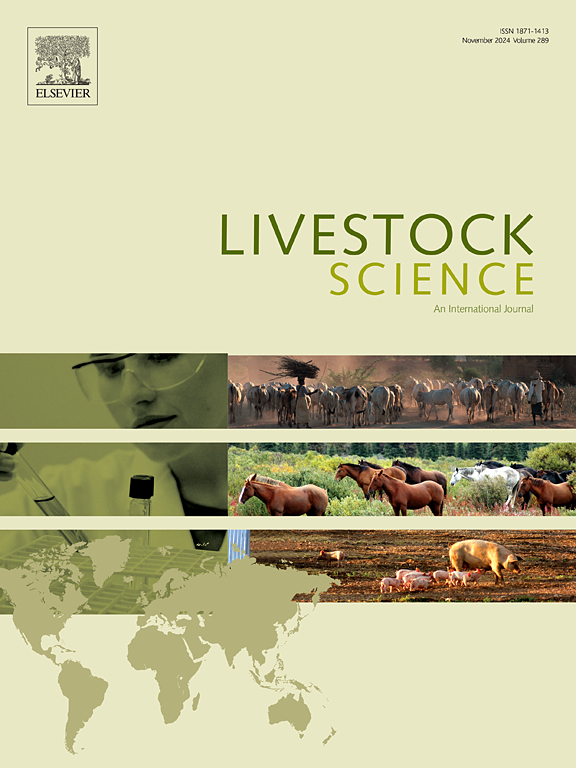Substituting barley with soya bean hulls in the concentrate offered to beef cattle as a supplement to grass silage or ad libitum: Intake, feed efficiency, carcass and selected meat quality traits
IF 1.8
3区 农林科学
Q2 AGRICULTURE, DAIRY & ANIMAL SCIENCE
引用次数: 0
Abstract
There is growing interest in human-inedible by-product feed ingredients as a substitute to cereals in concentrate feedstuffs for beef cattle. Three experiments were carried out to determine the effects of complete or partial replacement of rolled barley with soya bean hulls (SH) in the concentrate, offered as a supplement to perennial rye-grass dominant grass silage or ad libitum, on intake, rumen fermentation, feed efficiency, carcass characteristics and selected meat quality traits of beef cattle. The control concentrates were based on (g/kg fresh weight) rolled barley (860 g/kg), soya bean meal (60 g/kg), cane molasses (50 g/kg), and minerals and vitamins (25 g/kg), and in the treatment concentrates, barley (+ soya bean meal) was replaced with SH. Inclusion levels of SH (g/kg fresh weight) were; SH- 0 and 933 (Experiment 1); SH- 0, 200, 400, 600 and 800 (Experiments 2a and 2b). Concentrates were offered to growing cattle as a supplement to grass silage in Experiment 1 for 90 days and in Experiment 2a for 71 days (1.7 and 3.0 kg dry matter (DM) daily, respectively), and in Experiment 2b ad libitum to finishing cattle for 70 days. In Experiment 1, inclusion of SH in the concentrate supplement had no effect on total DM intake, live weight gain (LWG), feed conversion ratio (FCR) or on the acetate-to-propionate ratio in rumen fluid. In Experiment 2a, there was a linear decrease in LWG and a linear increase in FCR as the level of SH inclusion in the concentrate increased. Total DM intake did not differ between concentrate treatments. In Experiment 2b, there was a linear increase in DM intake and FCR, and a linear decrease in LWG, slaughter weight, carcass weight and carcass fat score as the level of SH inclusion in the concentrate increased. In Experiment 2b, increasing the inclusion level of SH in the concentrate, did not affect M. longissimus muscle colour, linearly increased the proportion of total saturated fatty acids, vaccenic, linolenic and conjugated linoleic acids, and linearly decreased the proportion of monounsaturated fatty acids in M. longissimus muscle. In conclusion, SH and rolled barley had equivalent feeding value for beef cattle at low concentrate supplementation levels to grass silage, but barley was superior to SH at moderate concentrate supplementation levels, and particularly in high-concentrate finishing diets. Soya bean hull inclusion had little effect on fat and muscle colour but improved the fatty acid composition of M. longissimus muscle in terms of human nutrition.
求助全文
约1分钟内获得全文
求助全文
来源期刊

Livestock Science
农林科学-奶制品与动物科学
CiteScore
4.30
自引率
5.60%
发文量
237
审稿时长
3 months
期刊介绍:
Livestock Science promotes the sound development of the livestock sector by publishing original, peer-reviewed research and review articles covering all aspects of this broad field. The journal welcomes submissions on the avant-garde areas of animal genetics, breeding, growth, reproduction, nutrition, physiology, and behaviour in addition to genetic resources, welfare, ethics, health, management and production systems. The high-quality content of this journal reflects the truly international nature of this broad area of research.
 求助内容:
求助内容: 应助结果提醒方式:
应助结果提醒方式:


